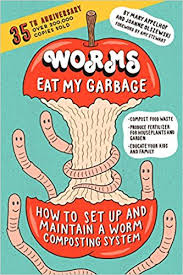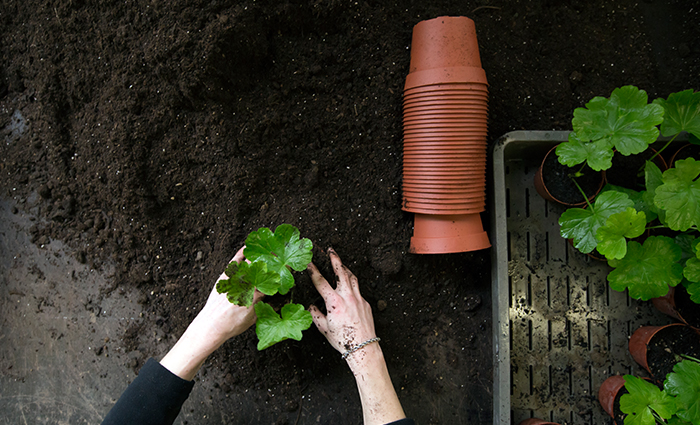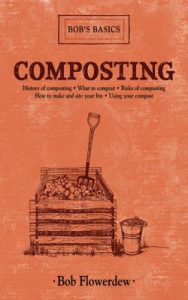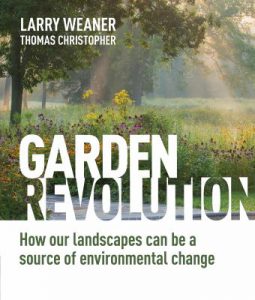Anticipation and inspiration: Getting ready for spring gardening
Posted on February 27, 2018 at 6:00 am
by Abra Cole
It’s nearly Go Time, my gardening friends!
We’ve almost made it through the winter, through the snow and the ice, through the below-freezing temperatures. We have watched last summer’s plants freeze and die back, disappear under a blanket of snow, and get stomped on (along with other indecencies) by neighborhood cats. We can finally envision the day when we will once again be able to go outside without shoes or scarves or 15 layers to keep warm. Spring is coming!
So the big question is: Are you ready?
At the end of each summer season, I try to jot down notes for the next year. I want to remember what worked and what didn’t; plants I had too many of or not enough of.
If you’re anything like me, upon the arrival of the first seed catalog, your brain immediately forgets everything negative, from frustrating to downright awful, that happened last year in your garden. For example, my internal dialogue goes something like this: “Wow, I do want to plant Romanesco Broccoli again this year. But, last year it ended up home to thousands of teeny tiny bugs… so, of course I don’t want to plant that… But it’s so pretty! Yes it is! I can battle the bugs! Buy all the seeds!”
This is when note taking comes in handy. To get you started, here are some tips I keep in mind each year for the growing season.
General clean-up
Even if you were the most meticulous and dedicated gardener at the end of the summer, your spring garden will need a little tidying up before you can get down to planting anything new.
This is a great opportunity to clear out old growth, fix your watering system, re-edge beds, and repaint fences. If you haven’t created a compost system yet, now would be a good time to do this as well. You will have plenty to add to it, starting with all the early weeds and leftover annuals from last year.
Here are some books about composting from our catalog.
Weeding & pruning
April showers bring May flowers. And February showers bring early weeds. Luckily for us, the rain also loosens the soil, which makes pulling those early weeds easier.
This is also the best time to cut the dead from your perennial plants. You should start seeing new growth popping up, and you will want to channel all of your plants’ energies into that healthy, new growth.
Here are some books to check out on weeding and pruning from our catalog.
 Sprucing up your soil
Sprucing up your soil
The soil I used last year wasn’t as nutrient rich as it should have been for a bountiful vegetable harvest. And even if your soil is better than mine was, you may want to consider testing your soil and adding nutrients before spring planting.
Different types of plants deplete nutrients in the soil at varying rates, which is why rotation planting is a useful tool, even in small garden beds.
I have been feeding a bin full of worms in my basement all winter, with the hopes to add their castings to my soil. Worm castings are an excellent source of nutrients for your plants, and a worm bin is one of the least time consuming methods for composting.
Check out these books on worm composting in our catalog.
Decide what you are going to plant
This is my favorite part of spring. Getting to dream of summer dinners to come, filled with tasty homegrown goodies.
Seeds
Note taking definitely comes in handy when you’re deciding what to plant. For example, if you planted six tomatoes plants last year, but ended up composting two-thirds of what you harvested, you know to only plant a couple of tomato plants this year, leaving room for something new in your garden!
Most seed companies will send you a catalog of their wares at your request. My favorite catalogs to pore over on wintery nights are Territorial Seed Company, Baker Creek Heirloom Seeds, and Seed Savers Exchange. You can browse these and others online, or request a print catalog to be mailed.
For the most part, I use these catalogs primarily as a point of reference. I love reading about the options and what each type of vegetable is best used for. When it comes to actually buying seeds, I prefer to buy as locally as possible. Seeds harvested locally are far more likely to succeed in our climate than seeds purchased from the other side of the country, and possibly a different growing zone.
Free seeds are a great local resource we have here in Spokane. There are free seed libraries located at three of the District Libraries! We have seed libraries in Cheney, North Spokane, Otis Orchards, and Spokane Valley.
Each library will have a slightly different selection, depending on what the local gardeners have brought in. You can borrow six packets of vegetable seeds and six packets of flower seeds from our seed libraries!
If you can’t find what you’re looking for at one of our seed libraries, you can try local seed sellers such as Northwest Seed & Pet. They have a great collection of local seeds, as well as flowering bulbs, garlic, and potato starts.
My preference is to combine seed-started plants with some purchased plant starts. I like to scatter marigold seeds around my garden, as well as carrot and lettuce seeds because they do best when planted from seed. But when it comes to things such as tomatoes or eggplant, I prefer to start with an established plant.
Plants
The annual Master Gardener plant sale is a must-visit for local gardeners. I trust the Master Gardeners absolutely. If you go, you’ll experience the enthusiastic volunteers who jump (sometimes literally!) at the chance to help you make a gardening decision (and sometimes convince you of the necessity of a plant you had never heard of!). Each year, this sale takes place near the end of April. This year, the plant sale is on Saturday, April 28, at 9am. And if you arrive early, you won’t be alone. You will see a crowd of excited gardeners ready to dig in to the selections.
You can also find plant starter inspiration at early season Farmers Markets, or local gardening shops such as Haase’s Greenhouse, Ritters Garden & Gift, and Smart Gardens Nursery.
The Spokane Conservation District is the home of the Annual Spring Tree and Shrub Seedling Sale, going on now through March 16. They offer a range of native trees and plants from raspberry bushes to towering Douglas Firs. The backbone plants of my garden all came from here, as well as some raspberry bushes and edibles.
Learn a new skill
If you are looking to develop a different type of garden or decrease your water usage with a rain barrel but aren’t sure how to implement these new ideas, there are some great local classes to expand your gardening knowledge.
In the next several months, we will be offering gardening programs in on topics, including Container Vegetable Gardening, Biodegradable Seed Pots, and Attracting Hummingbirds & Butterflies! Our Plant Starter Exchange this year is on Saturday, May 5, at North Spokane Library. Bring your extra starts to share, and take something new for your own garden.
You can find more information about these programs in our programs and events guide, Engage.
Both the Spokane Conservation District and the WSU Extension Office offer a selection of classes on garden-related topics. Check their respective calendars for upcoming programs.
Be inspired
Whether you’re just starting a garden or a longtime gardener, you can find inspiration and information at your local library. We have over a thousand books and resources to inspire you! And if that seems overwhelming, stop by a seed library or any of our libraries to talk to our staff. Many of us love gardening and can help you find the information you seek.
And remember, as author Captain W. E. Johns said, “One of the most delightful things about a garden is the anticipation it provides.” Because while it’s fantastic to eventually harvest the fruits (and vegetables) of your labors, this time of year is full of the anticipation of the garden yet to come.
Enjoy the journey to your wonderful garden!
Tags: adults, composting, composting with worms, DIY, events, family, food, garden, gardening, health, hobbies, kids, Master Gardeners, plant sales, plant starter, plant starter exchange, plant starts, pruning, seed libraries, seeds, teens, tweens, urban farming, weeding, worms, youth




